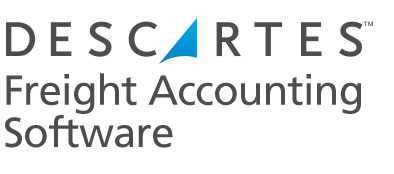Maximizing Revenue for Logistics Service Providers through Better Freight Forwarder Accounting Software
Maintaining the highest level of accounting standards is vital for any business. However, given the complexities of global trade, maintaining accounting best practices can be challenging. Carriers, freight forwarders, customs brokers and Non-vessel Operating Common Carriers (NVOCCs) know that including accounting into the operational equation is a cornerstone of success. With the right Logistics Service Provider (LSP) and freight forwarder accounting software, businesses are maximizing revenue by optimizing the following:
General Ledger (G/L) – G/L capabilities are part of the universal Generally Accepted Accounting Principles (GAAP) and are essential to more effectively analyze financial performance. A well-designed Chart of Accounts (COA) can help an organization drive value through improved insight. In addition, an accurate G/L, with costs appropriately allocated to the correct cost center, is also vital since the information is frequently repurposed to determine rates.

Maximizing the Potential of Freight Forwarder Accounting Software with Descartes
Automated Calculations – Freight charges may be based on contracts or location, but for LSPs, determining a brokerage charge, for example, can be less concrete. Options to add an item to an invoice via systems prompts at multiple operational junctures can help jumpstart profit potential.
Duty Drawback - Obtaining drawback refunds is complex but can be one part of augmenting the revenue potential for the LSPs who provide this useful service. Whether filing a claim or establishing a comprehensive drawback program, record-keeping is important to substantiating claims and is a significant value-add for clients.
Flexibility – The ability of LSPs to adapt to new lines of business is frequently a consideration in operational scenarios, but the same should also apply to accounting. Business line and divisional overrides as well as flexible G/L accounts can help accounting procedures adjust to changing operational processes and ultimately augment revenue.
Profit & Loss (P&L) – The P&L statement, as viewed over a given interval, can be assessed as a marker of the financial health of a business. For LSPs, gauging profitability should go beyond the periodic P&L to include granular analysis at the shipment or service level. Providing operational users with a measure of insight as to the revenue potential of a shipment can improve profits (both literally and figuratively) on a P&L’s bottom-line.
Transparency – Providing client visibility into operational process at key shipment or clearance milestones is one way that businesses are differentiating service offerings. For example, when a customs hold or inspection occurs, clients are better able to perceive the value of a service, less liable to challenge a charge and may be more likely to speed remittance.
Templates – LSPs regularly secure business by expanding into new locations or offering additional products. However, the bulk of shipments is not ‘one-off’ project work, but repeated business often on the same flight, route or trade line. Accounting processes that can duplicate previous work can help speed the rate of billing and result in quicker returns.
Compliance – Although adhering to regulatory requirements can be viewed as an unavoidable byproduct of doing business, certain compliance options can automate accounting-related procedures or even speed revenue collection. For example, LSPs who help importers submit duties via the Automated Clearing House (ACH) or who take advantage of programs such as the Periodic Monthly Statement are able to consolidate duties and have more time to remit payment, often without interest charges.
Multi-divisional Accounting - The ability to establish divisions also helps to fine-tune analysis and provides more meaningful regional insight or a clearer understanding of business line performance. Multi-divisional accounting practices are better able to hone in on areas of organizational excellence and are more readily equipped to identify potential areas of concern.
Many of the above items help bridge the information gap that may exist between accounting and operations. Maximizing revenue can be challenging in the competitive logistics industry, and deploying effective technology is one method to not only realize measurable financial gains but also provide a higher level of customer service.

Learn more about Descartes Solutions
WEB SEMINAR
In the 6th Annual Forwarder and Broker Benchmark Study we examine trends like digital customer experience, ecommerce. and the impact of the pandemic on forwarders and brokers strategies, tactics and technology thinking and decisions.
INDUSTRY WHITE PAPER
Forwarders & Digitization
Read our series on how freight forwarders are succeeding through effective digitization
